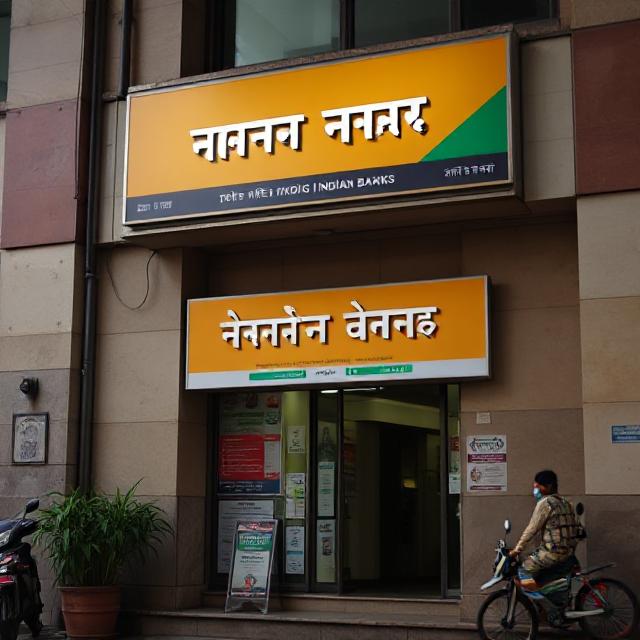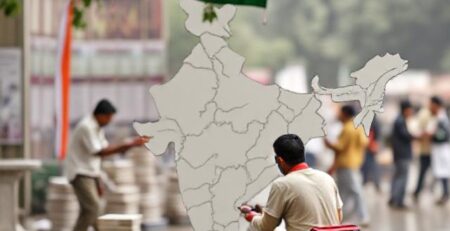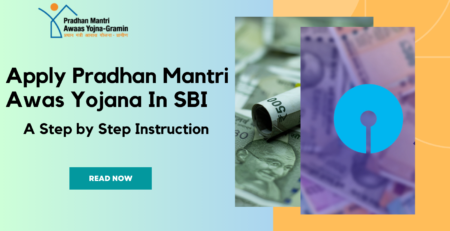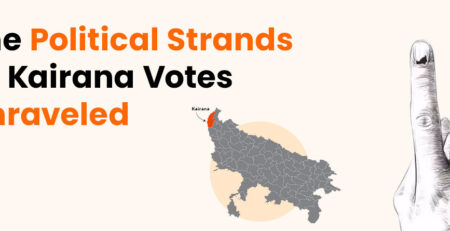4 PSU Banks Set to Merge: India’s Next Big Banking Consolidation Under PM Modi’s Vision
1. Introduction: The Banking Landscape in India
India’s banking sector has long relied on a large number of public sector banks (PSBs) to deliver financial services across the country. Over time, some PSBs have grown weak through high non-performing assets (NPAs), governance issues and fragmentation of operations across many small institutions. Under the leadership of Narendra Modi and his government’s push for reform, the plan of “fewer but stronger banks” has become a central agenda for public banking consolidation.
In 2019, the government announced mega-mergers that reduced the number of PSBs from 27 to 12. India Today+2mint+2 Now, a new phase of consolidation is reportedly under preparation, targeting another round of mergers that could reduce the number of PSBs further from 12 to around 8 by FY 2027. Moneycontrol This article explores which banks are likely to merge, why the government is pursuing this, how it will impact stakeholders, and what are the risks and opportunities.
2. Which 4 PSU Banks Are Set to Merge?
According to recent reports, the government is working on a roadmap to merge four PSBs with larger anchor banks by FY 2027. The formation is expected as follows:
- Indian Overseas Bank (IOB) → State Bank of India (SBI)
- Central Bank of India (CBI) → Punjab National Bank (PNB)
- Bank of India (BOI) → Bank of Baroda (BoB)
- Bank of Maharashtra (BoM) → Bank of Baroda (BoB)
These moves, if executed, would further anchor smaller or weaker PSBs into larger, higher-capacity institutions. Moneycontrol While no formal announcement has been made yet, sources indicate the Cabinet and the Prime Minister’s Office (PMO) will review the plan, and internal consultations are underway.
3. Why Merge PSBs Again? The Strategic Rationale
3.1 Building Global-Sized Banks
The government’s earlier consolidation in 2019 aimed to create “global‐sized banks” capable of higher ticket lending, wider branch networks and enhanced competitiveness. India Today+1 The next phase continues this logic: fewer banks but with more scale, better governance and stronger risk management.
3.2 Cost and Efficiency Gains
Larger banks bring economies of scale, better technology integration, unified back-end systems and lower overhead per branch. Some smaller PSBs struggle with weak capital, outdated systems and limited risk absorption ability.
3.3 Strengthening Weak Banks
By merging weaker banks into stronger ones (for example, Bank of Maharashtra or IOB being taken over), the government aims to reduce systemic risk, shrink the share of weak banks and prevent future capital infusion burden.
3.4 Regulatory & Market Expectations
In recent years, depositors, credit rating agencies and global investors have emphasised PSBs having sufficient capital, scale and governance. Consolidation helps the government align with those expectations.
4. The Roadmap & Timeline
- FY 2025–27: Internal consultations, legal and regulatory amendments (if required), selection of anchor banks and arrival of formal scheme.
- By FY 2027: Completion of second phase of mergers, possibly reducing PSBs from 12 to 8.
While precise timelines remain speculative, the government has reportedly signalled this as the next big push in banking reform. Moneycontrol The expectation is that larger banks – SBI, PNB, BoB – will absorb smaller ones, giving the system stronger pillars.
5. What Will Change for Stakeholders?
5.1 For Customers
- Wider branch and ATM network (post‐merger) of the anchor banks.
- Unification of products, technology platforms and potentially better service for some.
- Some transitions: branch renaming, changes in account numbers or IFSC, though prior mergings have tried to maintain continuity. The Times of India
5.2 For Employees
- Potential rationalisation of workforce (overlaps in back‐office functions).
- Opportunities in a larger bank with more roles.
- Cultural and operational integration challenges.
5.3 For Government & Taxpayers
- Lower recapitalisation burden if merged banks become stronger.
- Potential for increased lending capacity and improved financial inclusion.
5.4 For Investors & Market
- Banks with better scale may see improved credit ratings and stronger market credibility.
- Smaller banks targeted for merger may face uncertainty until formal announcement.
6. Challenges and Risks to Watch
6.1 Integration Risks
Mergers are complex — they involve aligning IT systems, culture, products, processes and employee terms. Poor integration can lead to service disruptions.
6.2 Regulatory & Legal Hurdles
Amalgamation of PSBs may require amendments under the Banking Regulation Act, 1949 and approvals from the Reserve Bank of India (RBI) and the Government.
6.3 Operational Continuity
During transition, customer service, loan operations or branch services may face friction unless carefully managed.
6.4 Regional & Political Concerns
Some regional banks have strong local identities. Merging them into larger national banks may raise state-level concerns over representation, branch attention or employment.
7. Impact on Banking Sector & Economy
7.1 Larger Lending Capacity
Major banks with bigger balance sheets can lend more to infrastructure, large corporates or rural development, aligning with the government’s economic growth agenda.
7.2 Better Risk Absorption
Fewer but stronger banks mean each entity has higher capital buffers, better governance and improved ability to handle financial shocks.
7.3 Improved Global Competitiveness
Very large banks with national reach can compete globally, serve large international clients and support India’s ambitions in trade and infrastructure.
7.4 Efficiency & Cost Reduction
Banking costs may reduce over time as merged banks streamline operations, reduce duplication and spread fixed-costs over larger business volumes.
8. Comparing With the 2019 Phase
In 2019 the government merged 10 PSBs into four anchors, bringing the number of PSBs down to 12 from 27. mint Key lessons from that phase:
- Integration takes time: some IT harmonisation extended beyond day one. The Times of India
- Synergy benefits accrue only after years.
- Customers largely retained banking continuity though branding and product harmonisation took time.
The upcoming merger round likely aims to apply those lessons and execute faster.
9. What This Means for Each Bank Involved
- IOB → SBI: IOB has struggled with high NPAs and limited scale; merging into SBI creates a strong backbone and better governance.
- CBI → PNB: Central Bank of India is a smaller entity; absorption into PNB reinforces PNB’s footprint and scale.
- BOI → BoB: Bank of India’s absorption into Bank of Baroda would further strengthen BoB’s national reach.
- BoM → BoB: Bank of Maharashtra merging into BoB consolidates BoB’s presence, especially in Maharashtra.
Each of these combinations seeks to match weaker or smaller banks with stronger anchor banks to optimise performance.
10. The Bigger Picture: Banking Reform and Economic Growth
This consolidation isn’t just about banking — it connects deeply with India’s broader economic goals:
- Infrastructure financing: Stronger banks can fund large infrastructure projects.
- Rapid growth vision: As India targets becoming a $5 trillion economy, a resilient banking system is critical.
- Financial inclusion: Consolidated banks can better leverage technology and branch networks to reach underserved regions.
- Global ambition: Larger Indian banks can step up internationally, supporting trade, cross-border finance and NRIs.
11. How Stakeholders Should Prepare
- Customers: Keep updated on branch changes, account numbers and IFSC codes; maintain regular banking operations even if merger is underway.
- Employees: Expect communication from leadership about roles, career paths and integration plans. Stability and clarity matter.
- Investors: Larger banks may become stronger, giving improved credit ratings and possibly better returns; monitor regulatory approvals.
- Regulators & Policymakers: Ensure integration is smooth, customer service is uninterrupted, and regional balance in branch and employment is respected.
12. What Could Derail the Plan?
- Delay in legal amendments or regulatory clearances.
- Integration hiccups: technology failure, branch disruption, customer dissatisfaction.
- Resistance from unions or regional political stakeholders.
- Unexpected macro-economic shock (e.g., bad assets, credit stress) negating merger benefits.
- Lack of proper workforce planning leading to attrition or decline in service quality.
13. Concluding Thoughts
The proposed merger of four PSBs into larger entities signals a bold next step in India’s banking reform journey. Achieving fewer but stronger public sector banks is a strategic move to boost scale, governance and global competitiveness.
While challenges remain — from integration risk to stakeholder concerns — the potential benefits for customers, taxpayers and the banking system are considerable. With a timeline toward FY 2027, the coming years will be pivotal in judging whether this round of consolidation succeeds in creating truly global-sized, efficient Indian banks.
14. Disclaimer
The information in this article is based on publicly available sources as of [current year], including government announcements and credible news reports. This article is for educational and informational purposes only and does not constitute financial, investment or legal advice. Mergers and banking policies are subject to regulatory approvals, changing legislation and market conditions. Readers should consult professional advisors for their specific circumstances.












